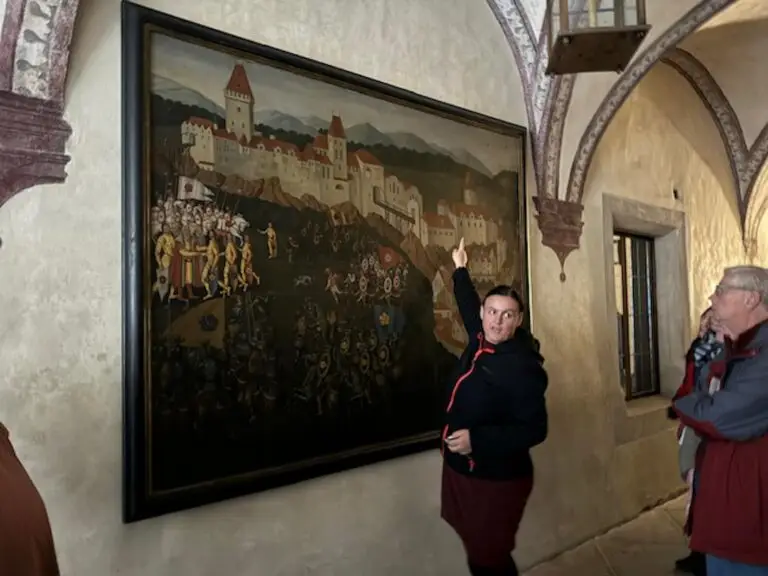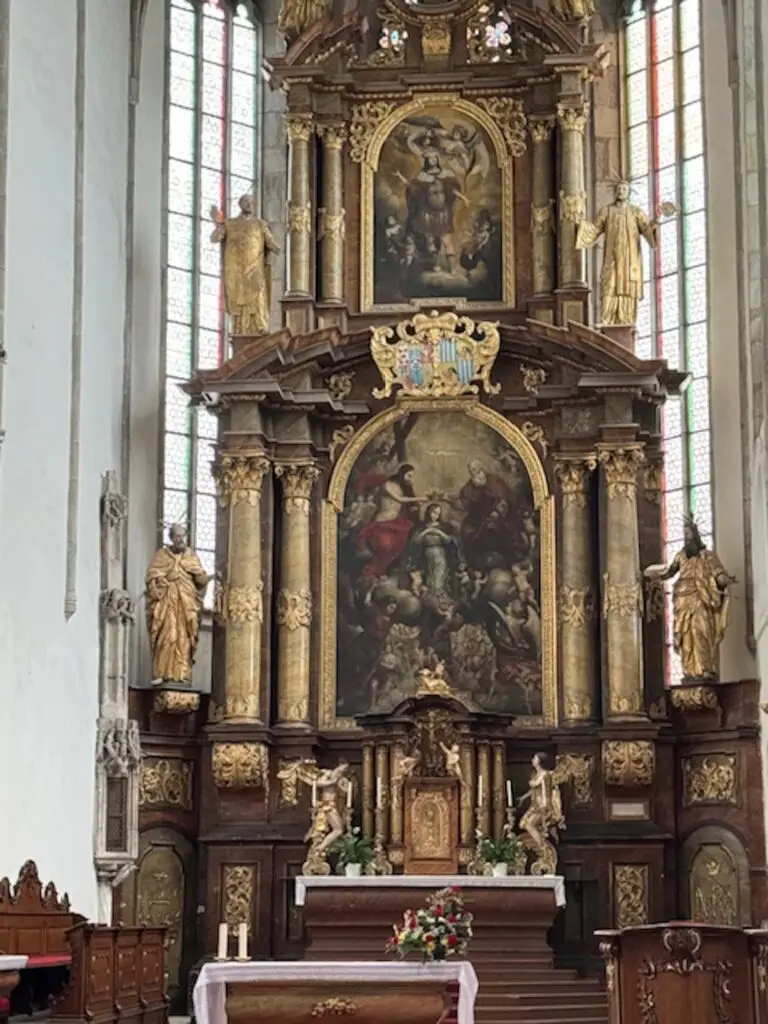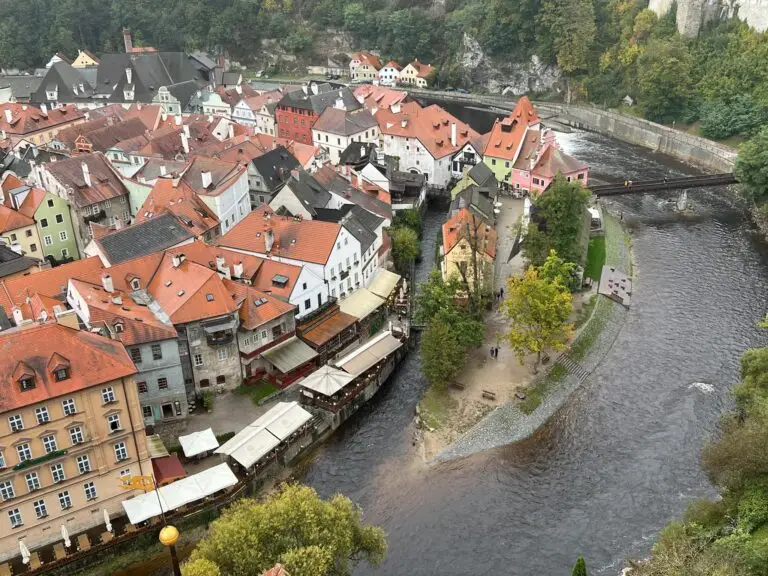Cesky Krumlov is an ancient town at the bend of the Vitaly River. Besides the imposing castle on the cliff, it has narrow alleyways and ancient roads reminiscent of Medieval times. Only the Prague castle is bigger than the Krumlov Castle in the Czech Republic.
Unfortunately, we had quite a bit of rain through the day, but we made the best of it to see what we could.
10:36 am to 5:12 pm. 3.79 miles, 10,712 steps, elevation +530 feet. Rain on and off all day.
Click for Richard’s Relive for Friday: https://www.relive.cc/view/vRO794oKByq






















6 Responses
The castle is amazing! Such a long history. So the current bears are descendants of the original bears that were there in the 1700’s?
There were originally four bears but they are not all direct descendants. Interestingly, castles are directed that they should not house bears after 2030. Cesky Krumlov plans to appeal that decision.
How interesting 🤔 I don’t know, I would have see the bears in person to determine if they were being treated well. Trip back?
I think a family trip back would certainly be interesting. Cesky Krumlov is an interesting stop, but Prague has sooooo much to see—more like Vienna in the number of “must-sees.” They are close like Sacramento and San Jose.
Looks like you had a very busy day. The city looks very walkable with lots to do. Think it was a good place to add to itinerary.
Dan
Cesky Krumlov definitely was walkable but Prague may be more of a challenge. I love the cities that have pedestrian-only areas, particularly when there are wide pedestrian-only streets. Ljubljana was the best for that.
Our neighbor went to school in Prague. She and her husband recommended Cesky Krumlov as well as some other Czech locations. Recommendations from friends have never let us down.